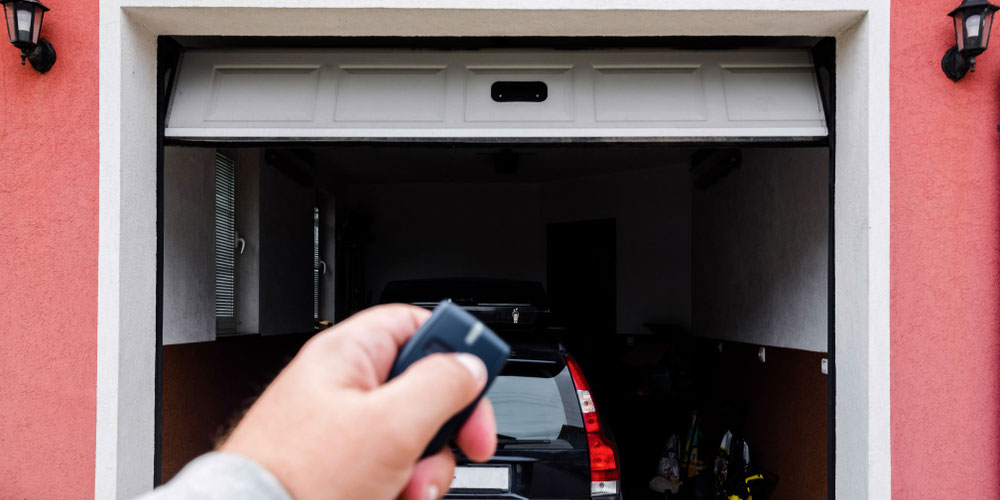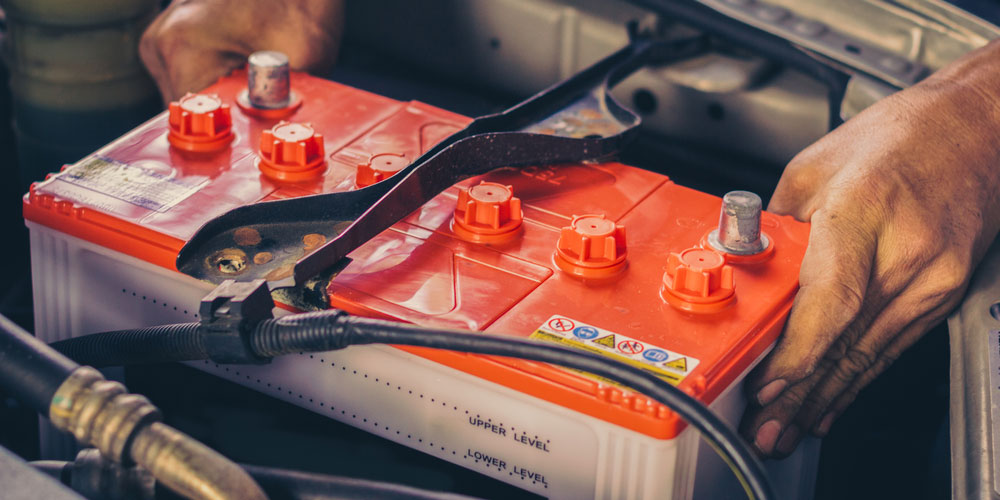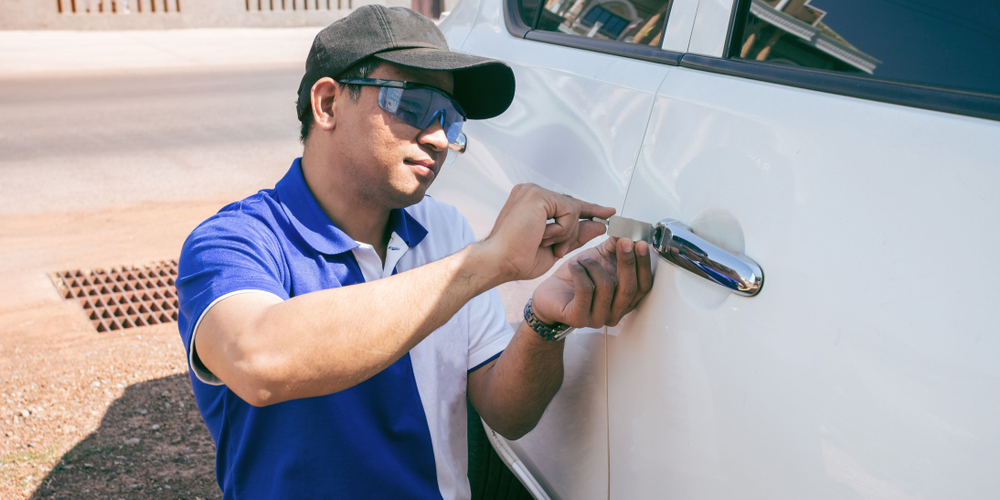Lock Blog
A resource for consumers, locksmiths, and security professionals
A resource for consumers, locksmiths, and security professionals

The amount of value placed on a vehicle fluctuates from person to person. Everyone generally agrees that cars should be treated with care in terms of longevity and preservation. But at what length are you willing to go for the best results? This is when long-term car storage becomes a viable option.
Maybe you have a classic car that requires long-term car storage at a facility specifically designed for it. Others might just be looking for some extra space to store an old car for a few months, and conditions aren’t a top priority. Regardless of where you fall on the scale, there are certain methods for long-term car storage that you should be following.
After careful consideration and hearing feedback from experts in the automotive locksmith and security industry, here is our comprehensive list of top 10 best tips for long-term car storage:
Putting your money and resources toward these long-term car storage practices has the potential to make a major difference in upkeeping your vehicle. Some of the items on the list may seem ineffective on their own, but by combining all of them, you will increase the success rate of long-term car storage.
Before we begin the list, let’s answer some frequently asked questions about long-term car storage and expand our knowledge on some basic concepts that are important to know ahead of time.
Ideally, you wouldn’t want your car to sit idle longer than three weeks. This should come as no surprise, but cars are meant to be driven on a regular basis. Daily use isn’t necessarily required, and neither is driving long distances. In fact, conserving car fuel and limiting use can have a beneficial impact on the environment.
However, vehicles are built to drive. Neglecting your car over time without taking proper long-term car storage procedures can cause damage in several ways. Any vehicle left unattended for more than a month is put at substantial risk, which we’ll address throughout this article.
Yes. It’s a smart move to disconnect your battery before long-term car storage because eventually, the battery will die. The longer you let your vehicle sit, the more the battery will drain and possibly create other problems. Battery maintenance holds a crucial spot on our upcoming list of long-term car storage tips.
If you decide to go the storage unit route for long-term car storage, you will have a few options to choose from as it pertains to unit size. Each storage facility is different, but the majority of them offer larger units that are more suitable for vehicles. The typical dimensions needed for long-term car storage are the following sizes in feet:
Obviously, the bigger units provide more square footage for larger or multiple vehicles. Classic cars, convertibles, and sedans should easily fit inside the medium-sized units. Trucks, SUVs, and RVs will need more space, thus going inside the larger units.
Part of our discussion later will be focused on storage unit security and how to bolster protection with long-term car storage, which includes properly securing a storage unit. You’ll soon learn these units not only come in different shapes and sizes but also offer special features that accommodate your security needs.
It certainly can be, but that’s why advice like this exists so that you can utilize it as a preemptive checklist. Is it a guarantee your car will be running smoothly after it sits for several months? No. Nothing is a guarantee. But storing your car in a storage unit is perfectly safe if you carefully follow these tips for long-term car storage.
The first and most important step for long-term car storage is finding a safe and secure location. Even without various levels of protection, at the very least, your vehicle needs to be in a safeguarded area. We’ve already talked about storage units a little bit, but in total, there are three main options to choose from:
Modern advancements in storage unit security have made it possible for tenants to choose units that have controlled climates. Long-term car storage increases the chances of your property suffering from heat damage over time. Luckily, climate-controlled storage units eliminate this issue.
Security experts would recommend taking advantage of this amenity for long-term car storage because having your vehicle parked in an unventilated unit for several months could cause significant damage, defeating the need to store it in the first place.
Aside from the internal environment, storage unit facilities are typically surrounded by fences and only allow entry to people with permission or through some sort of access code. These are secure properties with around-the-clock surveillance and possibly full-time staff who monitor the premises.
Using your own garage is another good place for long-term car storage. It’s within close proximity to you most of the time, considered private property, and keeps your car out of the elements. If you’re someone who doesn’t trust other people to watch over your vehicle, then making room inside your garage is the perfect option for long-term car storage.
Commercial garages are also adequate for long-term car storage, especially since a lot of these buildings are designed for it. Their main business is holding vehicles for people, so they don’t have to worry about day-to-day security and maintenance. It’s your job as a customer to make sure they’re keeping up with their commercial security.
No matter where you decide to keep your vehicle for long-term car storage, there needs to be a secure lock somewhere in the equation. That equation adds up to heightened security with a storage unit or garage by using one of the best padlocks of all time.
Padlocks are logical from a security standpoint because they offer optimal protection in a garage or storage unit setting. This streamlined entry also increases efficiency in large facilities and is ideal for warehouse security and commercial garages used for long-term car storage.
The strength of a padlock comes from the type of metal used to construct it. Strong-alloyed steel as the exterior housing will act as the best defense against someone trying to break a storage unit lock. You want the metal to be hardened and for any set screws and other drill points to be covered.
It’s also very important to remember that no matter how strong your padlocks are, they still need to be secured to a strong hasp or chain. If the lock is stronger than what it’s being secured to, a criminal can attack the hasp and ignore the lock. Perimeter security for long-term car storage is all about the infrastructure you put around the vehicle.

Part of building that infrastructure is mixing in some high-level surveillance technology. Security cameras are great for long-term car storage because it allows you to keep an eye on your vehicle 24/7. Placing security cameras strategically in the right position does a lot for overall protection.
Pointing cameras toward the main ingress points of a garage are important, as well as covering alternative access points too. Burglars sometimes think going for secondary openings will yield better results. Fortunately for long-term car storage, cameras on garages and storage units don’t have to cover much ground.
This means you’ll spend less money on equipment and have less perimeter to monitor. There are only so many places someone can get into a garage or storage unit, and most of the time, it’s only the front door. Coupling surveillance with a proven and trusted lock will tremendously improve your long-term car storage security.
Just because you’re not using your car for a while doesn’t mean you can ignore changing the oil. When oil sits for too long inside the engine, it creates mechanical problems. Using synthetic oil reduces the chances of this, but changing the oil should still be on your to-do list for long-term car storage.
Having clean oil in your vehicle is going to make things easier on the engine while it quite literally collects dust. As long as the oil is fresh before long-term car storage, all you’ll need to do is get another oil change when you want to drive the vehicle again.
The reason for getting two oil changes on both the front and back end of long-term car storage is to reduce the chance of engine failure. An oil change shrinks the window of opportunity needed for that to occur and is better for taking care of your car!
Similar to topping off the oil, filling the gas tank before long-term car storage is beneficial to your vehicle’s health. Leaving your car in storage with less than a quarter tank increases the possibility of moisture getting trapped inside. Moisture becomes a huge problem because over time, the gas tank begins to rust.
A full gas tank in long-term car storage allows no room for air and moisture to enter the tank and cause damage and corrosion. The worst-case scenario would be the tank rusting from the inside, leading to bigger problems throughout the body of the vehicle.
An important reminder for when you drive the car again, please consider emptying and then refueling the tank. If you’re only storing the vehicle for a couple of months, this isn’t necessary. But after several months or years, the fuel will go bad and be unusable. Don’t sacrifice the lifetime of your car over the price of gas!

It’s a little known fact outside of expert circles that your car battery will die after not being driven for a bit. Without starting the car and supplying power to the battery, it gradually drains over time. This is called self-charge, and it will inevitably kill the battery. So how can you avoid this?
Battery maintainers are the best defense against self-charge. A battery maintainer is a device you hook up to the car’s battery as it supplies power over a long period. This is not the same as a battery charger because it specifically only trickles out a tiny amount of energy to the battery. Just enough that it will provide power at a faster rate than what the battery is producing.
Generally, battery maintainers are inexpensive and will end up saving you money in the long run. You can avoid replacing the car battery or having it reconditioned after long-term car storage, and the best part is they require no attention whatsoever!
It’s perfectly safe to leave the maintainer on and connected to your car battery inside a garage or storage unit. Getting your hands on one shouldn’t be an issue either. Maintainers will be available at your local auto parts store!
Keeping your car’s exterior and interior clean will only help during long-term car storage. A car wash may seem like a minor detail, but it’s not one to overlook. Cars collect dust and debris the longer they sit, which can lead to other problems. Getting it waxed isn’t a bad idea either because it will only add another level of protection.
On the spectrum of what seems completely unnecessary for long-term car storage, plugging the tailpipe is probably on the top of that list. However, it does make a difference. Stuffing an old car rag inside the exhaust pipe prevents rodents, insects, and any other pests from making your car their new home.
Long-term car storage is all about preservation, and just like museums and old estates use fiber cloths to preserve ancient artifacts and vintage furniture, so can you on your car. This will stop dust and dirt from collecting on your vehicle and keep it pristine. Like many of the other items mentioned earlier on the list, a quality car cover prevents contact with damaging substances.

Automotive locksmiths can provide a unique perspective as you’re gearing up for long-term car storage. For one, they specialize in safety and security, the two most crucial elements. Locksmiths will also be able to recommend new locks or security measures that will improve your long-term car storage.
Assessing weaknesses and potential security breaches are part of the job. If nothing else, you will gain more insight into how long-term car storage security is beneficial to the protection of your vehicle. After all, your car is a vital asset and something that should be cherished. So why not get the best possible security advice from a trusted source?
Long-term car storage isn’t something to mess around with. Whether you’re preserving an all-time classic or just keeping a roof over an old beater, every car deserves the best possible care. Locksmiths are always willing to give their input and offer their expertise too!
By following this list and using it as your long-term car storage compass, your vehicle is in great hands. The only left to do is follow through and hold yourself accountable for the journey ahead, and if you need help along the way, pick up the phone and call a locksmith!
Category: Automotive, How To's, Safety & Security